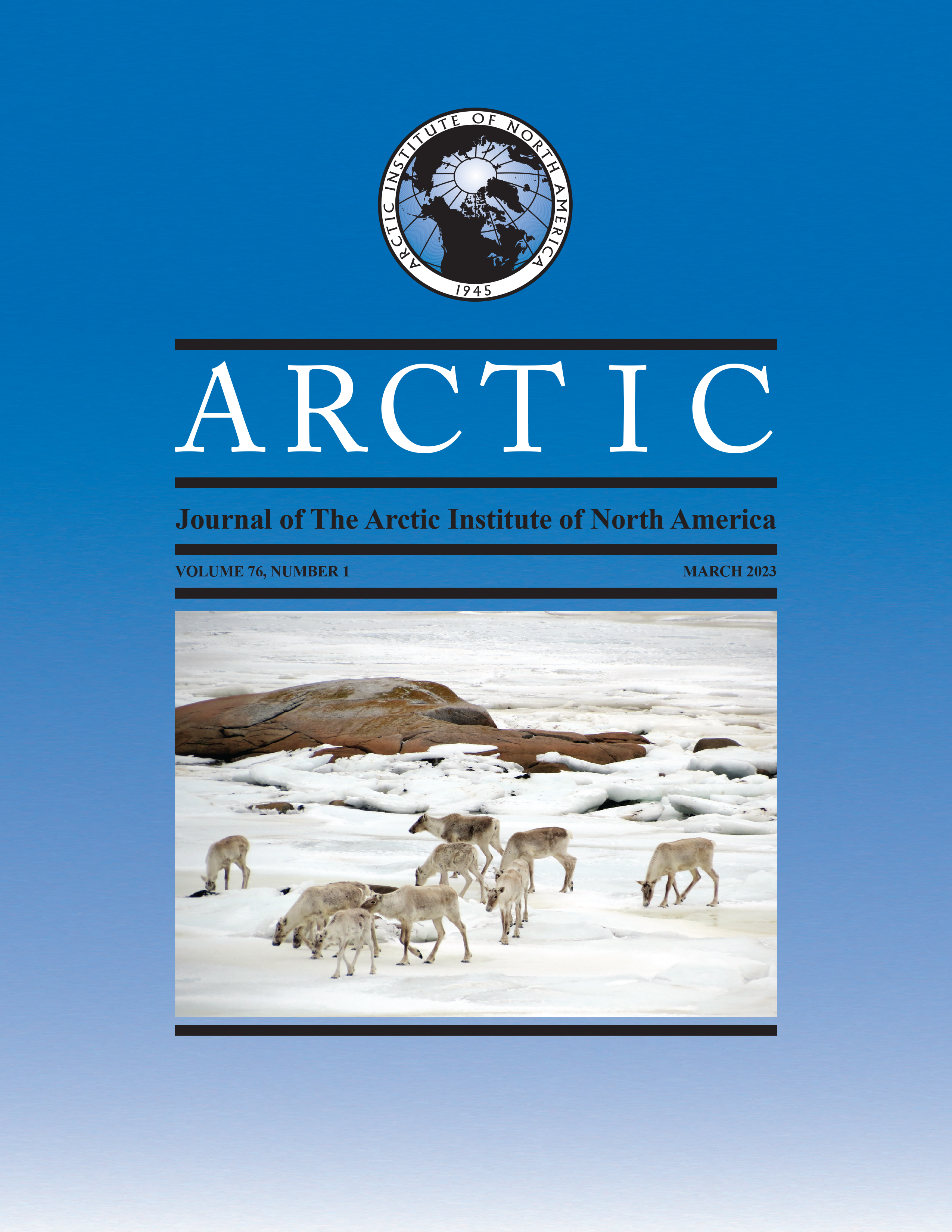Seasonal Sea Ice Conditions Affect Caribou Crossing Areas Around Qikiqtaq, Nunavut: Uqsuqtuurmiut Knowledge Guides Ice Chart Analysis
DOI:
https://doi.org/10.14430/arctic77149Keywords:
caribou; sea ice; phenology; ice charts; climate change; Inuit knowledge; Uqsuqtuuq (Gjoa Haven); Kitikmeot; Nunavut; Canadian Arctic ArchipelagoAbstract
Though polar ecologists consider sea ice primarily as a habitat for marine mammals, caribou use sea ice to complete their reproductive cycles, to access areas with preferred climatic and vegetation conditions, and to avoid predators seasonally and sporadically. Building on previous caribou research in Uqsuqtuuq (Gjoa Haven, Nunavut), we explored the connections between caribou and sea ice phenology in 5 community-identified caribou crossing areas around Qikiqtaq (King William Island). We defined freeze-up and breakup based on Uqsuqtuurmiut (people of Uqsuqtuuq) knowledge of caribou habitat requirements, to orient our analysis to the complex and multifaceted hazards that caribou can encounter while moving through their dynamic and unpredictable sea ice habitat. We investigated the reliability of caribou sea ice habitat surrounding Qikiqtaq, prioritizing key transitional periods with intensified caribou movement. We use regional ice charts produced by the Canadian Ice Service (CIS) and held workshops with Uqsuqtuurmiut to understand how sea ice phenology and caribou mobility have changed over time. The high spatial and temporal variability of sea ice phenology around Qikiqtaq facilitates caribou moving across sea ice should they need to respond to seasonal or unpredictable changes in ecological conditions or anthropogenic disturbance. Therefore, these localized sea ice conditions may increase caribou resiliency to changes or extreme events by providing alternative options for movement across the sea ice. We encourage others to consider the needs of wildlife sea ice users when assessing or providing ice information.
Downloads
Downloads
Published
Issue
Section
License
Copyright (c) 2023 ARCTIC

This work is licensed under a Creative Commons Attribution 4.0 International License.


